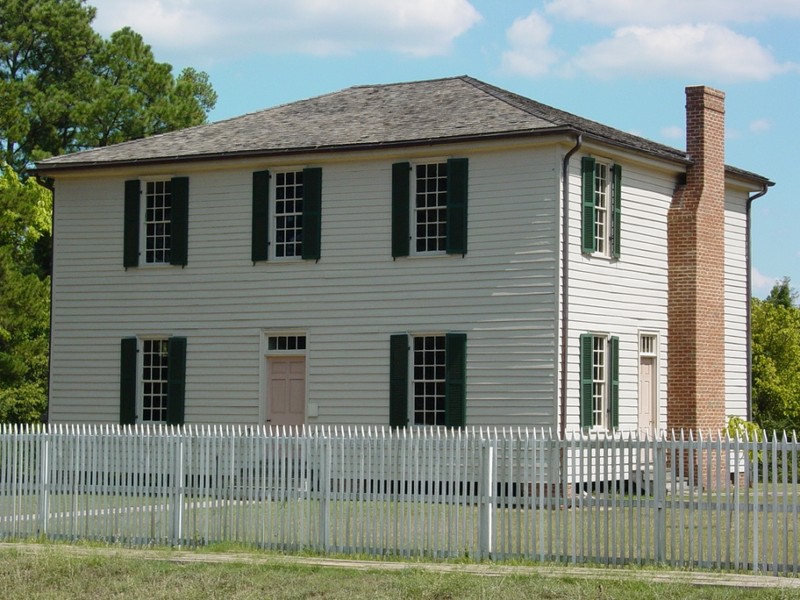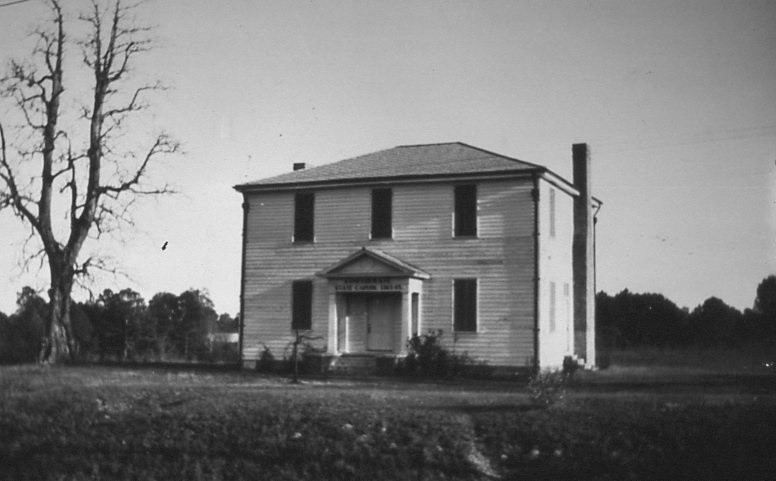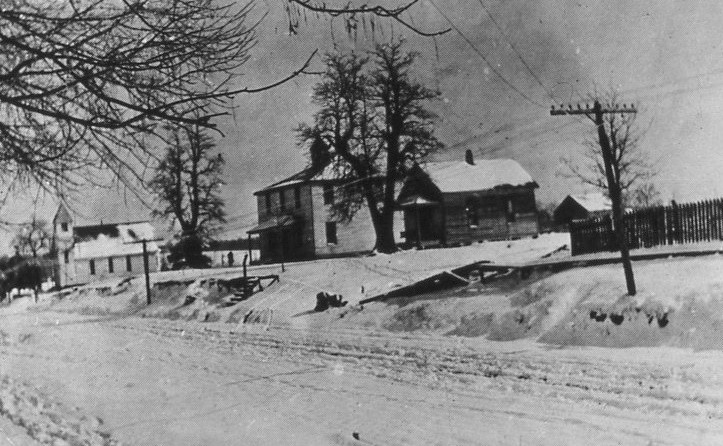This entry includes a walking tour! Take the tour.
Introduction
Text-to-speech Audio
One of the oldest Federal-style buildings standing in Arkansas, the 1836 Courthouse was the first proper courthouse in Hempstead County. It hosted one of the founding members of the Arkansas Grand Lodge, Mt. Horeb Lodge No. 4. In 1864, the county courthouse housed a special session of the Confederate General Assembly, following the government’s flight from Little Rock. After county business moved to the new 1874 Courthouse, the structure served as a schoolhouse for the next 40 years. In 1929, an effort was made to preserve the structure as a historic site, as it is today.
This building is available on guided tours.
Images
1836 Hempstead County Courthouse

1836 Hempstead County Courthouse as a schoolhouse c. 1900.

1836 Hempstead County Courthouse after 1929 restoration.

1836 Hempstead County Courthouse on Franklin Street, c. 1900.

Backstory and Context
Text-to-speech Audio
The first building to hold county business was John English’s log cabin located 7 miles north in Marlbrook. When the county seat moved to Washington in 1824, it was held in Elijah Stuart’s log cabin, located just one block down from the future courthouse. By statehood in 1836, this two-story Federal-style structure was built to be the first proper courthouse for Hempstead County. The courtroom takes up the entire lower floor, with two massive pillars painted in faux marble to support the upper floor. Upstairs was mostly taken up by offices, with one room for the town’s masonic lodge, Mt. Horeb Lodge No. 4. Originally founded under the Grand Lodge of Alabama, this lodge was one of four that founded the Grand Lodge of Arkansas and featured many of the town’s most important people as its members.
The courthouse served as a public space for events and special meetings, including debates as to whether to secede from the union following Abraham Lincoln’s election in 1860. Although Washington initially voted to remain, Lincoln raising troops to deal with the attack at Fort Sumter forced another meeting, at which John Gratiot famously walked to the front of the room and threw down the American flag. The building served as a recruiting station for volunteer militias and Confederate Army musters. After Union forces sacked Little Rock in 1863, the Confederate state government fled south to Washington. In September 1864, a session of the legislature was held to settle state business, and the building has become known as the Confederate State Capitol Building. Following the war, the Reconstruction government decided to build a larger brick courthouse across town, and the building became a schoolhouse for the next 40 years. The previous lodge was no more, but New Mt. Horeb Lodge No. 695 started meeting upstairs.
By the 1920s, the courthouse was in deteriorating condition. The United Daughters of the Confederacy successfully campaigned the state to fund the restoration of the building in 1929. When the Pioneer Washington Restoration Foundation began in 1957, the 1836 Courthouse was one of the featured sites. The building came into the state’s hands with the establishment of Historic Washington State Park in 1973. A restoration in the mid-1990s restored the original four rooms upstairs and a second stairwell, and removed a port-a-face the U.D.C. had added for decoration.
Sources
Brooke, Steven. Historic Washington, Arkansas. Gretna, Louisiana. Pelican Publishing Company, 2000.
Kwas, Mary L.. Digging for History at Old Washington. Fayetteville, Arkansas. The University of Arkansas Press, 2009.
Medearis, Mary. Washington, Arkansas : History on the Southwest Trail. Hope, Arkansas. Copies + Office Solutions, 1984.
Montgomery, Don. A History of the 1836 Hempstead County Courthouse. Journal of the Hempstead County Historical Society, ser. Winter 1985, vol. 9, no. 1, p. 9 - 21.
Williams, Charlean Moss. The Old Town Speaks : Washington, Hempstead County, Arkansas, gateway to Texas, 1835, Confederate Capital, 1863. Houston, Texas. The Anson Jones Press, 1951.
Williams, Joshua. Washington. Images of America. Charleston, South Carolina. Arcadia Publishing, 2014.
Arkansas Department of Parks, Heritage and Tourism
Southwest Arkansas Regional Archives
Southwest Arkansas Regional Archives
Southwest Arkansas Regional Archives
